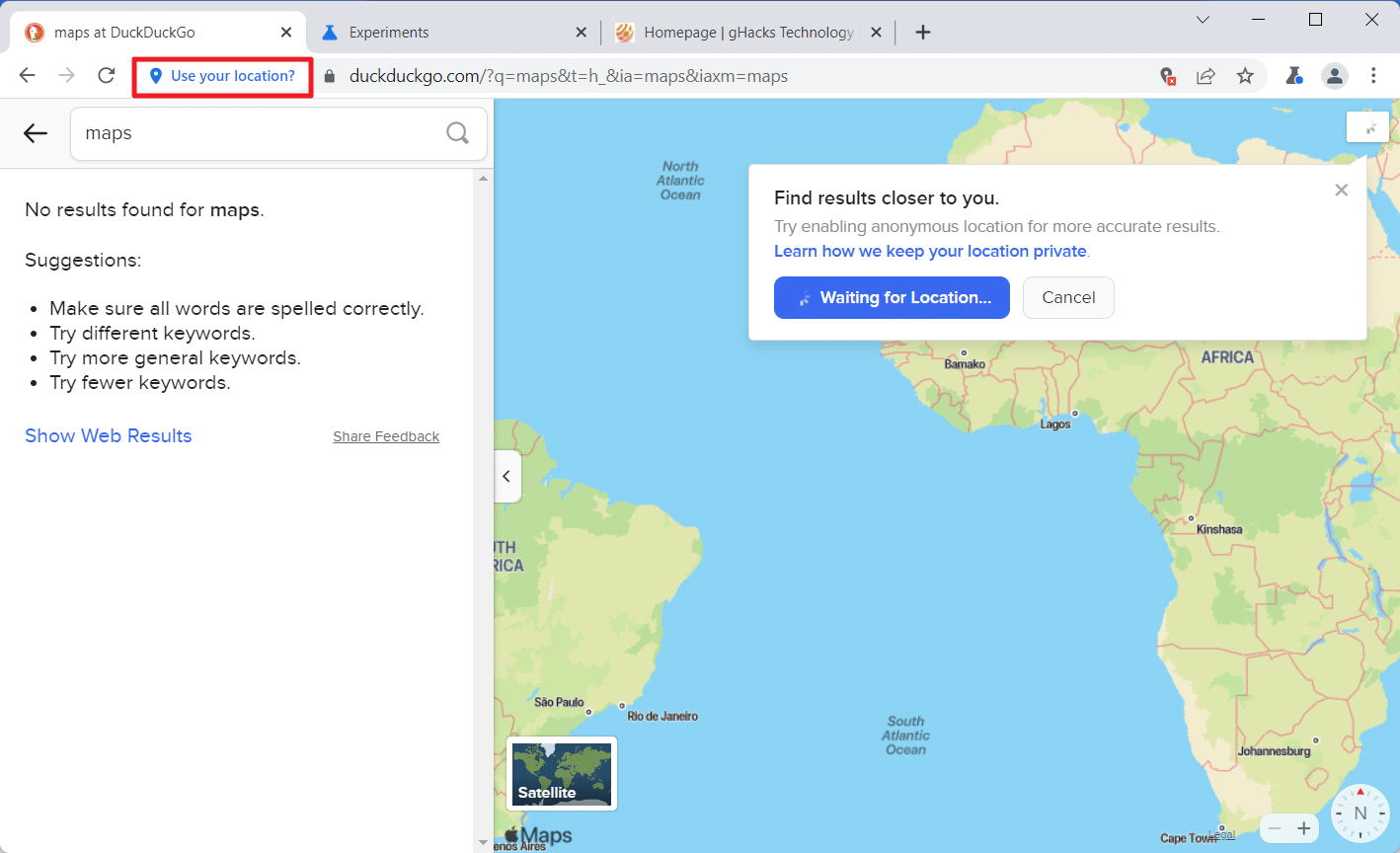Google is making permission requests in Chrome less annoying
Google Announced plans to make permission requests in the company’s Chrome web browser less obtrusive in February 2022.
When a Chrome user opens a site on the Internet that asks for permission, for example, a map service that asks for location permission, Chrome displays a large message in the upper left corner. The indicator remains visible on the page until the user interacts with it, reloads the page, or navigates away. The permission prompt has buttons to block and allow, and an option to close it.
Google engineers recently analyzed telemetry data to better understand how users were interacting with these prompts. According to that data, permission requests are ignored or dismissed by an average of 85% of users. An additional 9% of users select the block option to prevent the site from showing ads in the future; this leaves less than 7% of all users selecting allow as an action.
Prompts stand out and insist that users make a decision, as they remain visible if the user chooses to ignore the prompt altogether. The urgency of the prompt and the low number of users positively interacting with the prompts gave Google a reason to look for an alternative.
Starting with Chrome 98, Google users will see an animated chip UI in the browser’s address bar when a site requests permission. It displays an icon and the name of the permission the site is requesting, and users can click it to display the full prompt that allows them to allow access to the requested feature or block it.
The request chip displayed by Chrome will collapse into an auto-locked icon after a short time to indicate that the permission is temporarily locked. Chrome displays a locked icon for several seconds before reverting back to displaying just the site’s lock icon.

There are exceptions to the default behavior (there are always exceptions, right?):
- Chrome displays the full request for permissions that it considers “essential” and considers to be “generally not spam.” The permissions are camera, microphone, and camera paired with microphone.
- Chrome displays the full prompt if the permission was triggered “through a user gesture while interacting with the site itself.”
Enable the feature now
Google rolls out new functionality to all Chrome users over time. Chrome users who want to enable it out of the box can do so by enabling the following flags:
chrome://flags/#permission-chipchrome://flags/#permission-chip-gesturechrome://flags/#permission-chip-request-type
A restart is required before the changes are visible in the browser.
closing words
The change improves the user experience in Chrome, as permission prompts are no longer displayed on the screen until the user interacts with them. Some sites may see drops in permission interaction stats. Google announced that it may enable more aggressive auto-blocking behavior in the Chrome browser in the future.
Now you: How do you handle permission requests?
advertising
















